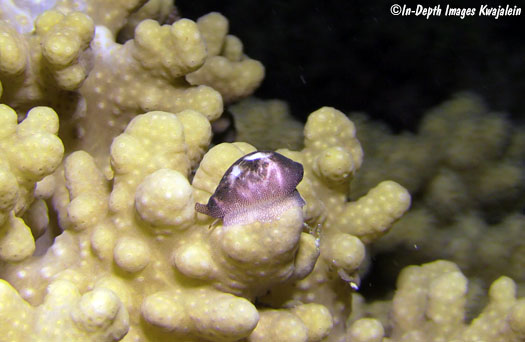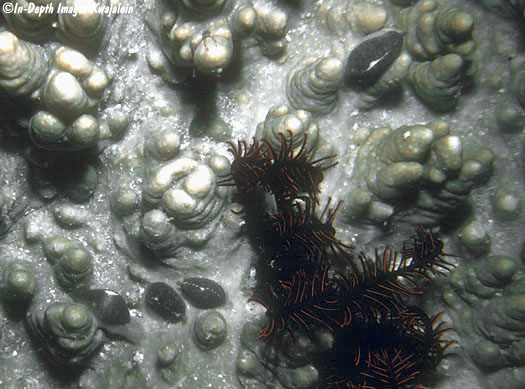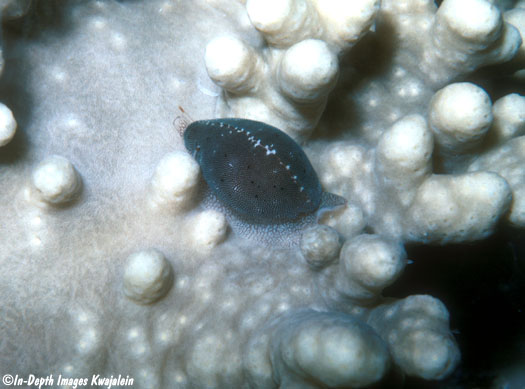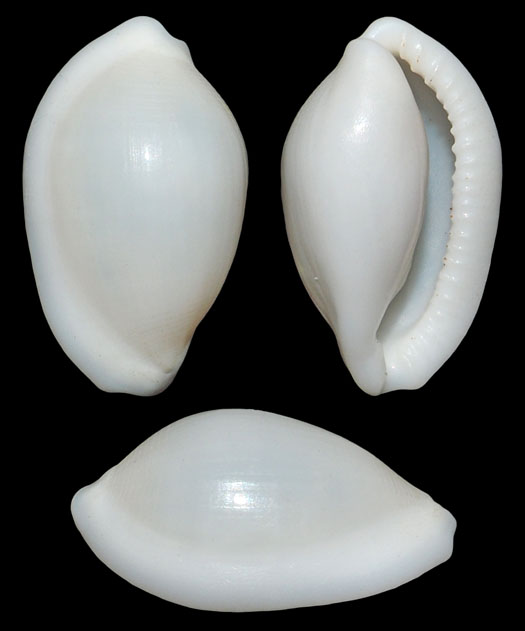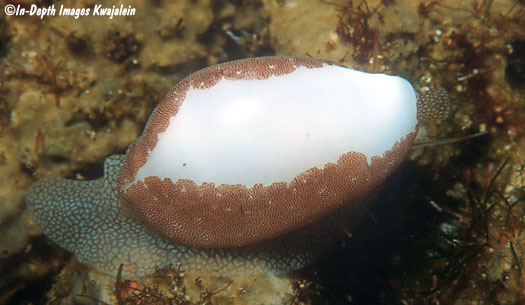

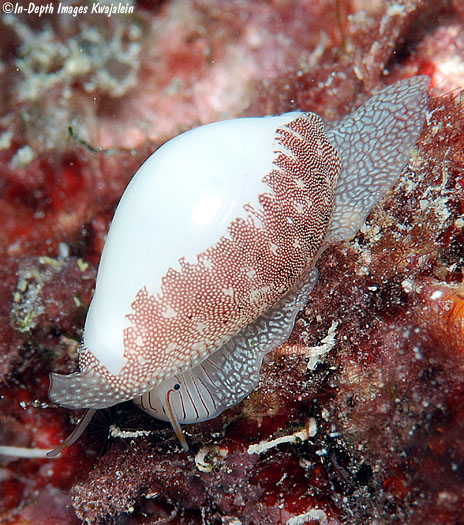
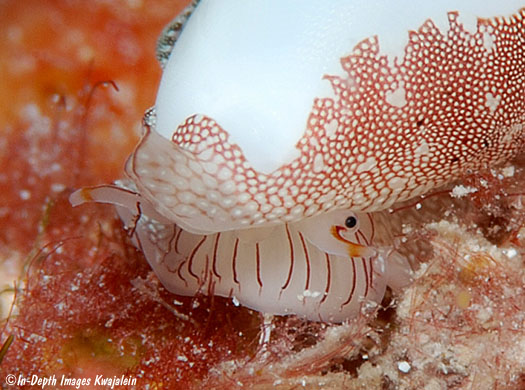
The shell of Procalpurnus lacteus is very similar to that of Procalpurnus semistriatus. Both species are shown in the photo below, with P. lacteus on the right. The shells of both are pure white and similar in size and shape, but P. lacteus is smooth while P. semistriatus is finely striated. The color of the mantle of the two species is similar, but as is evident in the photo below, the foot color differs considerably. Also, the siphon on P. semistriatus is solid yellowish tan color with a distinct red-brown margin, while that of P. lacteus (photos above) is brown spotted with white. Curiously, specimens of the two different species, including the two in the photo below, can sometimes be found together on a single soft coral colony. Since the vast majority of soft coral colonies host no specimens at all, it seems unlikely that the same coral colony would be inhabited by two different species. It almost seems less unlikely that the foot color in this species is simply variable. I do not think we can discount the possibility that these are simply two forms of one species. More detailed animal studies, including comparison of DNA, would be valuable in determining the relationships.
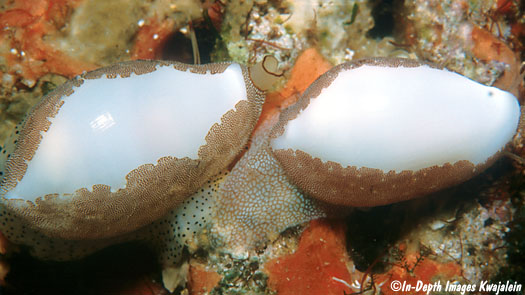
This one had a darker mantle and showed an interesting oval ring on top of the head between the tentacles.
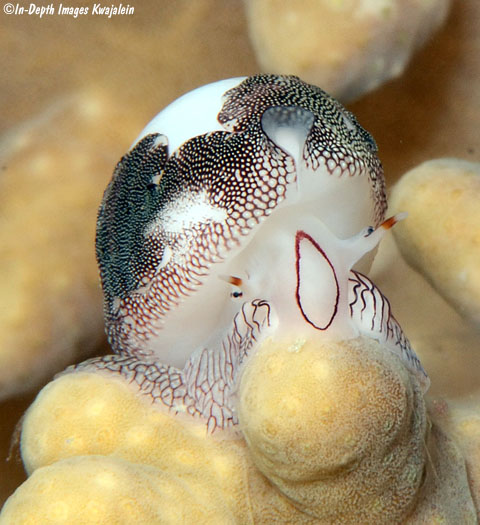
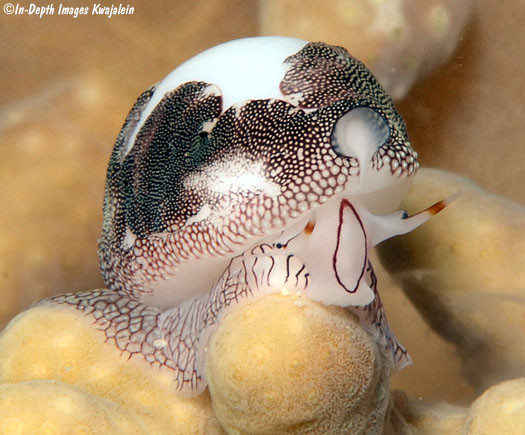
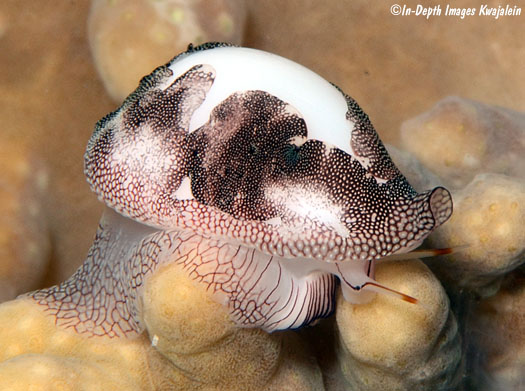
The specimen above on the soft coral colony.
